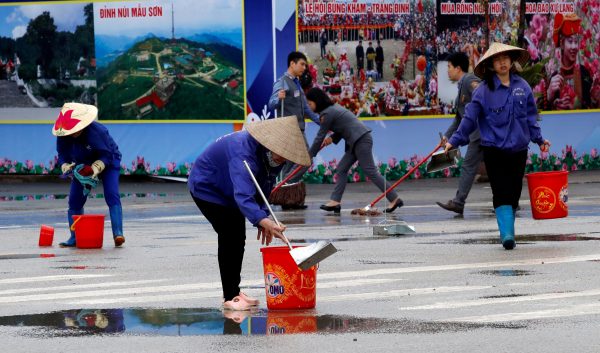It might also be because domestic laws need to be internally cohesive, meaning that gender equality provisions adopted in one context require corresponding upgrades to other legislation. This has been the case in Vietnam.
The Vietnamese government is discussing ratifying the Comprehensive and Progressive Agreement for Trans-Pacific Partnership (TPP-11), under which it will have to conform to the agreement’s international labour standards. Similarly, signing the EU–Vietnam Free Trade Agreement (EVFTA) will require Vietnam to comply with references to sustainable development. Article 13.4(2) of the EVFTA specifically lists the parties’ commitment to the International Labour Organization (ILO) 1998 Declaration on Fundamental Principles and Rights at Work, which requires respect, promotion and effective implementation of non-discrimination and gender equality.
Gender equality is a weak spot in Vietnam’s regulatory framework. Despite its strong 2013 Constitution and dedicated Gender Equality Law of 2006, studies in Vietnam and recommendations from international treaty bodies point to a number of issues in the country’s 2012 Labour Code that undermine women’s rights and gender equality.
In 2015 the Committee on the Elimination of Discrimination Against Women raised concerns over the lower retirement age for women, the extensive list of prohibited occupations, discriminatory practices by employers based on maternity and pregnancy, the persistent gender wage gap, and the concentration of women in low-paid and unprotected jobs in the informal sector. The ILO raised similar concerns in the context of ratified conventions on non-discrimination.
According to the World Economic Forum’s 2017 gender gap index, Vietnam rates 69 out of 144 countries. The situation is less encouraging on the ratio of economic participation and opportunity, with women in Vietnam having 26 per cent less opportunity to earn than their male counterparts.
In early 2017 Vietnam’s Ministry of Labour, Invalids and Social Affairs (MOLISA) invited the Australian Government through its Investing in Women (IW) initiative to provide technical assistance for gender-sensitive reform of the Labour Code. Five issues became the target of consultation and technical debate. These were harmonising retirement ages for women and men (currently 55 versus 60), removing occupational segregation provisions that imply women are physically weaker than men (prohibiting them from certain jobs, 77 in total), strengthening provisions for parental leave and childcare so that men and women can balance work and family responsibilities, improving sexual harassment provisions, and completing the definitions of ‘equal pay for work of equal value’ and ‘remuneration’.
There is low public awareness and understanding in Vietnam of the importance of women’s and men’s equality in employment and the role that gender equality plays in economic growth. In particular, while expressing a wish for decent work for women alongside men, there remain pervasive stereotypes about what women (the ‘weaker’ sex) can do or what they want to do (look after their children and older family members). So discussions about new statutory requirements to help achieve work-family balance for all workers needed to draw out the economic and social arguments in favour of change.
Likewise, care was taken during consultations with businesses to frame the removal of barriers to women’s participation in the economy as being part of a government strategy to make workplaces more productive and Vietnam more competitive in Southeast Asian growth. According to the McKinsey Global Institute’s The Power of Parity 2018 report, including women in economic growth could increase the Asia Pacific’s GDP by 12 per cent by 2025, with the Vietnam estimate being 10 per cent, or US$40 billion above business-as-usual. The economic argument for removing regulatory barriers to women’s greater contribution was not lost on business or government.
A policy impact analysis, which examined the economic, legal, administrative, social and gender implications of proposed changes to the Labour Code, made pro-gender recommendations that were endorsed in the multi-stakeholder consultation that brought together more than 200 policymakers, influential individuals, and worker and employer representatives.
The policy options target eight Labour Code provisions (articles 8, 153, 154, 155, 157, 159, 160 and 187), related circulars and a proposed new gender-transformative chapter no longer aimed at ‘protecting women’ but ‘ensuring and promoting gender equality at work’.
The new text of the Code is not yet tabled. Among the last IW inputs will be an assessment of gender mainstreaming in the final Labour Bill and a high-level information session for National Assembly members early this year, as MOLISA completes its submission to the National Assembly’s May 2019 session. Hopefully this careful analysis of workplace gender discrimination and the process that is put in place for tackling it will bear fruit.
Jane Aeberhard-Hodges is Gender Equality Director of the Australian Government’s Investing in Women initiative.
This article appeared in the most recent edition of East Asia Forum Quarterly, ‘Investing in Women‘.

